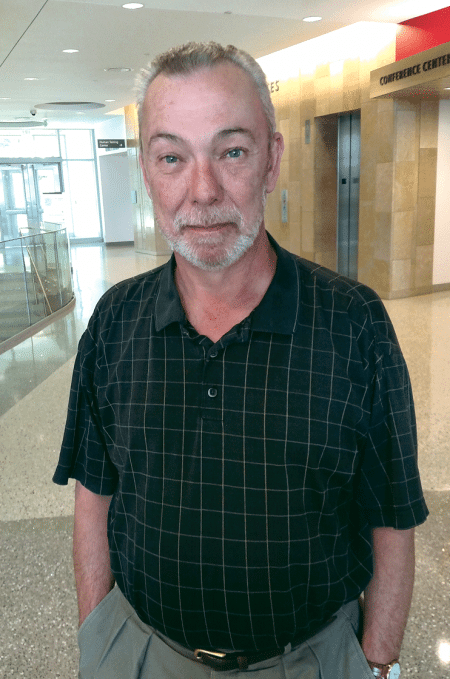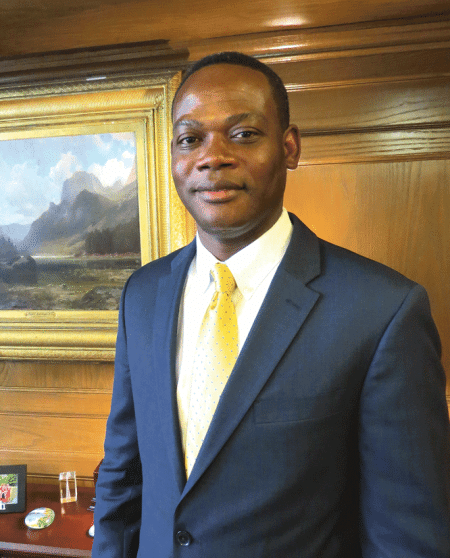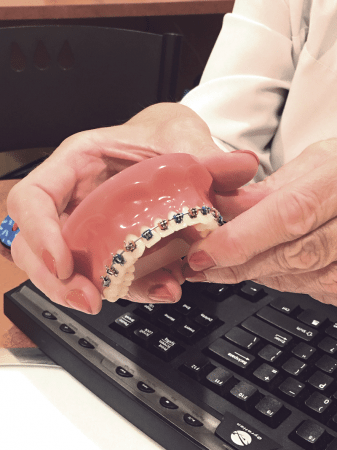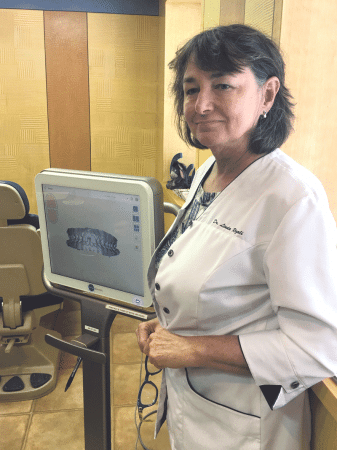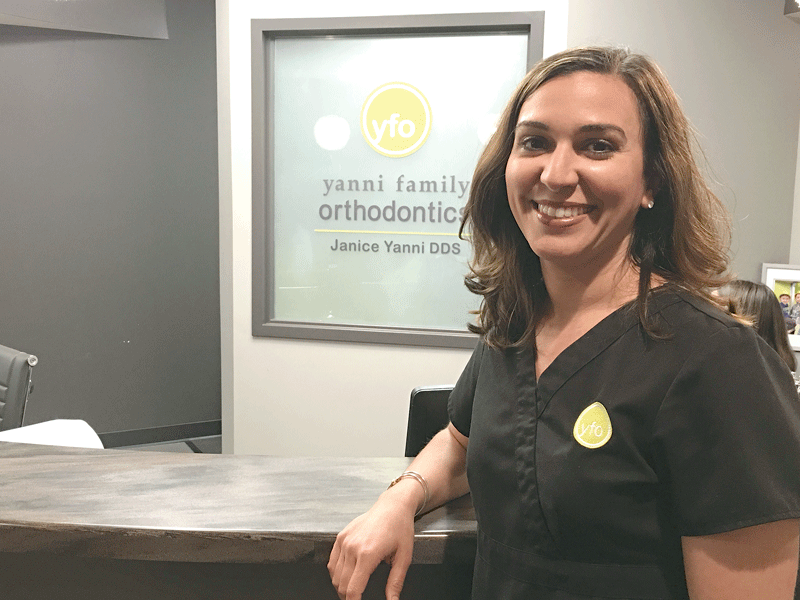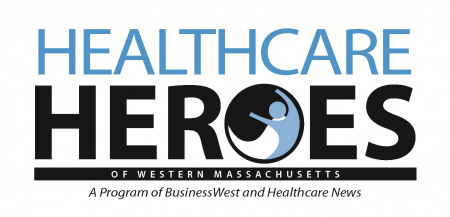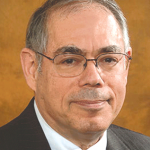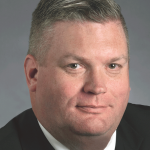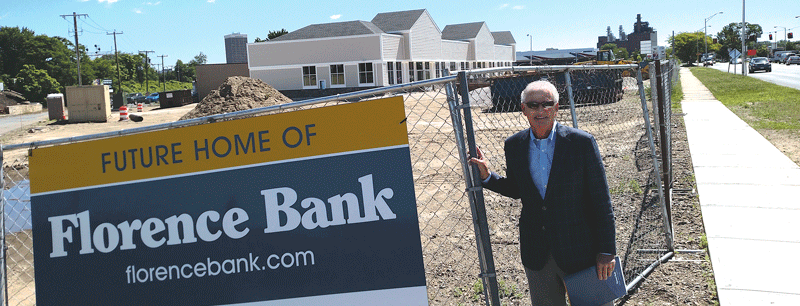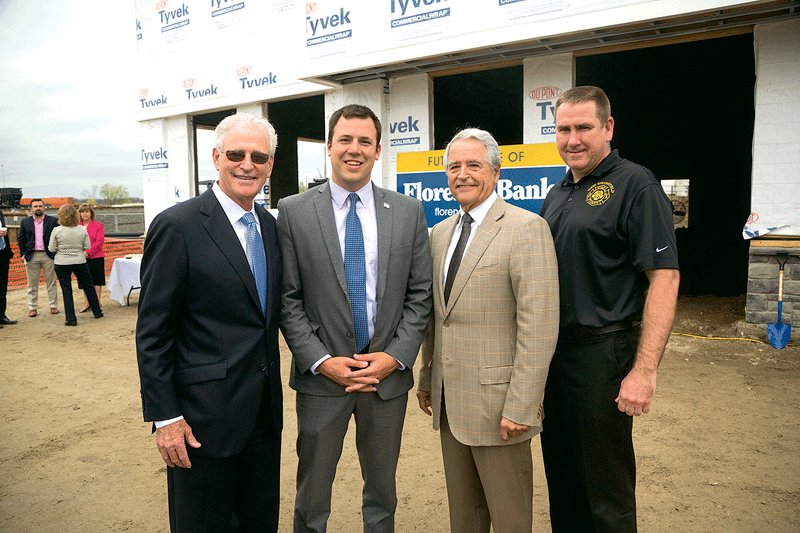The ‘Arms Race’

Westfield State University President Ramon Torrecilha says investments like the school has made in its food services are necessary in a changed landscape in higher education.
When people hear the phrase ‘arms race in higher education’ — and they’re hearing it a lot these days — what usually comes to mind are dining commons that offer more choices than a five-star restaurant, dorms that look more like hotel suites, and elaborate gyms, rock-climbing walls, and related athletic facilities.
And while that’s certainly part of the picture when it comes to this arms race — terminology generally used to describe a heightened competition for students and especially top talent — there are aspects to this equation that are far less obvious to the casual observer, according to the college presidents we spoke with, including:
• A new administrative position — director of Enrollment Management — at Westfield State University, noted its president, Ramon Torrecilha;
• A considerable investment in additional personnel and facilities in the Career Services Office at Western New England University, said its long-time president, Anthony Caprio;
• Development of a “student experience master plan,” said UMass Amherst Chancellor Kumble Subbaswamy, noting, for example, that the dormitory towers in the Southwest residential area do not exactly lend themselves to social interaction; and
• Renovations to the Hatch Library at Bay Path University to create what President Carol Leary called “collaborative and adaptable spaces for group learning in an environment that is also sensitive to technology.”
These steps and others are being taken because this arms race — a phrase that none of these presidents seemed particularly eager to say out loud because of the somewhat negative connotation attached to it — is about much more than competing for what has long been a smaller, seemingly more discerning, pool of high-school students with ramped-up facilities. Indeed, it’s also about — or more about, according to those we spoke with — helping these students succeed and generating value for the huge investment that they and their parents are making in their education.
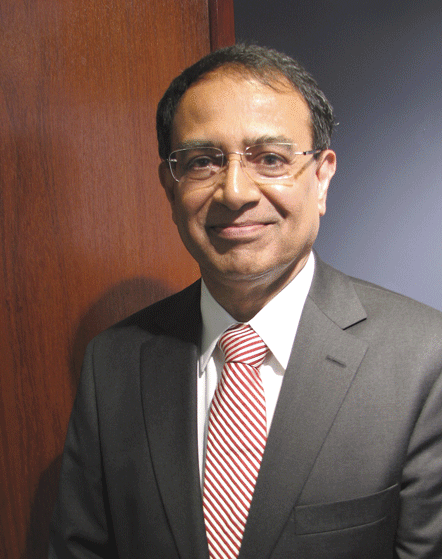
UMass Amherst Chancellor Kumble Subbaswamy says that, as schools compete for students, geographic boundaries and the line between public and private schools have become blurred.
Thus, you’re hearing words and phrases that college administrators hardly ever said out loud until recently — like ‘value,’ ‘customers,’ and ‘return on investment.’
“The value proposition of higher education has changed insofar as the discourse these days is on the return on that investment,” said Torrecilha. “There is a much bigger emphasis on outcomes; students and parents are very interested in knowing what the outcome will be from a four-year education.”
More to the point, they’re interested in securing a solid outcome, meaning a job with a salary worthy of four years of tuition and fees.
“As the cost of education has escalated, more attention has been paid — and rightly so, frankly — to what the student is getting out of their education,” said Subbaswamy. “As the cost has shifted from the state to those families over the years, both students and families are more aware of what they’re giving up, and universities are more attuned to providing value.”
Meanwhile, the presidents we spoke with said there is a fine line between making an investment in a new dorm, dining commons, student union, or science center because it helps in the recruitment process — and because competitors have already built such things — and doing so because these are necessary investments in efforts to help students succeed.
And they would argue that, on their campuses, it has been more for the latter than the former.
“At Bay Path, our response to the ‘arms race’ is all about value — how we provide students with the academic experiences that will best prepare them for the future,” said Leary. “In response to our students’ expectations for value, we strive to contain the cost of education. We are one of the lowest-priced private colleges in the Northeast, and the American Women’s College is exceptionally cost-effective. The investments we make, and increasingly the areas where our donors support Bay Path, are in financial aid, academic advising, and career preparation, including paid internships.”
While Subbaswamy admitted there was one facility on the UMass Amherst that might — that’s might — fall into the category of “keeping up with the Joneses,” as he put it (the John Francis Kennedy Champions Center for UMass Basketball), he and other presidents said their schools are not spending money on items that don’t add to the value proposition and the overall learning experience.
Said Leary, who recoiled at the word ‘amenities’ as it is so often used in discussion of the arms race, “there are not many frills with a Bay Path education.”
For this issue and its focus on education, BusinessWest takes an in-depth look at the many aspects of this arms race, and especially the ways in which area schools are heightening their focus on student success and generating that sought-after return on investment.
Food for Thought
Subbaswamy couldn’t recall the exact wording or many of the specific design details, but the advertisement in the Boston Globe several months ago certainly caught his attention.
It was placed by the University of Pittsburgh, which, to his recollection, was touting itself in that advertisement as the “best public university in New England.”
“Since when did Pittsburgh become New England?” he asked BusinessWest, adding that this marketing initiative speaks volumes about what’s happening in higher education today and the forces that are fueling this arms race.
In short, borders, geographic and otherwise, are coming down as schools recruit needed students, said Subbaswamy and others we spoke with, adding that there is now little distinction between public and private four-year schools — especially as many states pull back on funding and shift the burden to students and their parents. Meanwhile, many institutions, like the University of Pittsburgh, are casting a wider net in the search for students, and taking steps to land them.
And marketing efforts, like that Boston Globe ad, are just one vehicle. For example, in 2015, the University of Maine launched something called its Flagship Match program, whereby students in Massachusetts, for example, could enroll at the Orono campus for the same price they would pay to attend UMass Amherst, a deal that slashes roughly half off Maine’s nearly $30,000 out-of-state rate.
And the tactic has worked. Indeed, the number of Massachusetts students planning to attend UMaine has nearly doubled since the introduction of the program.
But, as noted, discounting the cost of an education is only one of the strategies being put to use. New dorms, dining commons, and, yes, the occasional rock-climbing wall have been built in an effort to turn the heads of students and especially their parents, said Caprio.

Anthony Caprio
And they’re doing it because such facilities are now expected, and, to some extent and with some constituencies, demanded, he went on.
“We’re aware that the audience has changed,” Caprio explained, using that term as a collective for students and their parents. “They want bigger, they want more modern, they want to have privacy, they want a lot of room around them.”
In some respects, that’s because this is what they’ve grown up with, not only at home, but also at some of the high schools going up in communities across the state and the country. “Some of these high schools have better athletic facilities than we do,” he said, without a trace of exaggeration in his voice.
Caprio noted that even elite, Ivy League schools such as Harvard and Yale have been making huge investments in non-academic aspects of their campuses, presumably because even these institutions need to do so in this changed environment.
Torrecilha agreed. “When students come to a new-student orientation, they don’t ask to see the classrooms — they want to know where they’re going live; they want to see what the residential hall looks like and feels like,” he said.
This focus on campus life also explains why WSU recently made a huge investment in creating its own food-services department and significantly upgrading its offerings.
The ambitious project, undertaken in partnership with UMass Amherst, which currently has the top-rated food-service division in the country, was described by Torrecilha as a risk, one he considers well worth taking.
“I spent a lot of nights thinking about this because it meant bringing a $13 million operation into the school budget,” he said, adding that WSU previously used an outside vendor to prepare food. “And once you hire these people, they become part of your payroll. So it was risky, but it was worth it; our participation rate is up considerably.”
Meanwhile, WNEU is also investing in a new dining commons, a $28 million renovation Caprio said is being undertaken out of necessity, not exactly a desire to keep pace, although he acknowledged that’s part of the ‘necessity’ part.
“When we deliberated about this, we said, ‘we have to modernize,’” he explained. “We had a building that was very nice, but it was totally inadequate — it was too small and not conducive for anything but students chowing down their food and getting the heck out of there because someone was trying to grab their seat. That’s not the kind of place we want it to be.
“Students are used to different kinds of diets, and there’s such a new awareness about the quality of food, the types of food available, and how it’s prepared,” he went on. “It’s simply impossible to ignore all of that, and you need to have the right facilities to do it.”
A Study in Value
But while the competition for students has escalated, thus adding to the building and renovating boom talking place on many campuses, so too has the need to show a return on the investment that students and their parents are making, said Torrecilha, adding that both phenomena are part of a still-changing landscape in higher education.
“We’re much more outcomes-driven than ever before,” he told BusinessWest, using that collective to refer to colleges and universities of all shapes and sizes. “Institutions of higher education are being asked to demonstrate that their students will be able to be placed in a job or, in some cases, transition to graduate school.”
And this sea change has led to other types of investments, some of them far less visible — such as those in counseling, career-placement facilities, and enrollment-management efforts designed to not only get students into a school but also get them onto the podium at commencement ceremonies — yet are also part of the arms race.
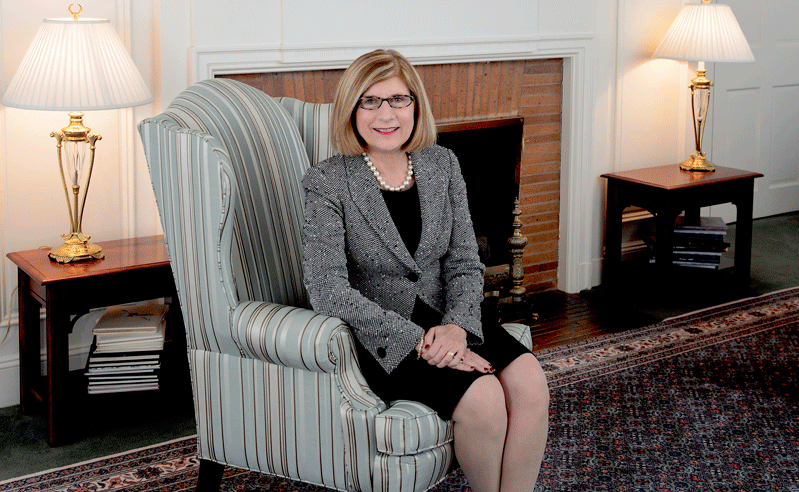
Carol Leary says that ‘value’ in higher education is not about rock-climbing walls, but instead about providing a solid return on the investment made in attending college.
Leary said such efforts fall into that broad category of ‘value,’ and noted that this concept is so important to the school and its administrators that it is one of the four main tenets of its Vision 2019 strategic plan and was the primary area of focus for the board of trustees during this past academic year.
“Last fall, the board participated in a series of focus groups with students, parents, alumni, and employers so trustees could hear first-hand how our customers define value,” she went on. “What we learned — and it was no great surprise to us — is that the cost of education, academic advising, and career preparation are top of mind. Not one word was mentioned about luxury dorms, rock-climbing walls, Jacuzzis, or other amenities that some people think of when they hear the term ‘arms race.’”
She believes these focus-group responses are directly attributable to the diversity of students Bay Path serves — more than half are first-generation college students, and an equal number hail from families with what she called “extraordinary financial need.”
“And the majority of our students work one if not multiple jobs to pay for their education,” she went on, adding that two-thirds of Bay Path’s undergraduate students are adult women enrolled through the American Women’s College (AWC), which offers programs online.
“While unique, their expectations are aligned with our traditional students,” Leary said of the AWC students. “They want a major and an experience that will enable them to excel in careers or graduate school.”
And with that phrase, she summed up succinctly what has become a point of heightened emphasis for all schools.
Indeed, while ‘student success’ is not exactly a recent phenomenon, that two-word phrase wasn’t heard much in the corridors and offices within higher-education facilities until this century, said Subbaswamy.
Now, it is the primary directive, and there are many elements that go into this quotient, including facilities like new science buildings (UMass Amherst, WSU, Bay Path, WNEU, and other schools have one, by the way), additional personnel and resources in career centers, WSU’s director of Enrollment Management, and, yes, even those new dining facilities.
“The fields we’re expanding into at this school are ones that require very modern facilities,” said Caprio, echoing the thoughts of his colleagues as he spoke. “We need to have modern laboratories, whether we’re teaching pharmacy or any of the sciences we’ve expanded into, or engineering, or our new programs, like occupational therapy.
“You need to have ultra-modern, up-to-date, current laboratories, because without those tools, these students cannot be prepared to go out and work in the profession they’re choosing to go into,” he went on. “We’re not doing it for show, nor are we doing it because the students can’t tolerate anything more simple; we know what we have to provide in order to provide the kind of education these students need and that they expect to get the jobs they desire.”
Leary used similar language as she talked about Bay Path’s renovations to science labs on its main campus and the building of the Philip H. Ryan Health Science Center in East Longmeadow.
“We created state-of-the-art facilities to make sure our students have hands-on experience with cutting-edge equipment,” she noted. “Advanced technology has literally transformed teaching and learning in disciplines like neuroscience, occupational therapy, and physician assistant studies. Thus, these new facilities are driven purely by academic needs. I think that is important.”
At UMass Amherst, said Subbaswamy, the more than $1.8 billion in campus infrastructure work undertaken over the past 10 years has been far more about replacing neglected facilities built 50 or 60 years ago — “catching up,” as he called it — than keeping up with the competition.
Course of Action
As he talked about the arms race and the greater emphasis on outcomes today, Torrecilha mentioned another new and apparently necessary expenditure for his institution — the purchase of student names from the College Board.
When I meet with parents, or at our open houses, I talk about how we bring about return on investment to them, and how we’re not at all ashamed or hesitant to say that believe in art for art’s sake and education for education’s sake. We really work hard at trying to provide services and guidance to our students so they understand the world of work and understand the pathways to getting effective jobs.”
This is something the school has never done before (many colleges and universities have been doing it for decades), but is doing now as part of the heightened focus on enrollment and enrollment management, he explained, adding that the school will be acquiring roughly 100,000 names at 42 cents each.
These are the names of young people, most all of them in Massachusetts and the bulk of them from the eastern part of the state, an area WSU has traditionally recruited many of its students from. And they are considered to be potentially solid fits for the institution.
“We’re being more strategic in the way in which we recruit students,” he explained, adding that, as part of this initiative, he wants WSU to start the recruitment much earlier than a student’s junior year in high school — when it traditionally begins — and perhaps as early as elementary school.
WSU’s purchase of students’ names is part of that heightened emphasis on outcomes, said Torrecilha, adding that the school’s new director of Enrollment Management also falls into that category. It’s an important hire, and it speaks to how the business of higher education is changing.
“Westfield State University, like a lot of state institutions, didn’t have to think about enrollment until very recently,” he said, driving home his point by noting that, until this year, the school processed all applications by hand. “It was one of those cases of ‘build it and they will come’; we never had to think about the incoming class, but times have changed.”
Today, the school is far more focused on attracting students, creating what Torrecilha called the “right mix” of students, and guiding those students to success — be it in graduate school or the job market.
This is increasingly a sector-wide approach, said Subbaswamy, noting that his school, like most others, is making greater investments in the realm of student success, many of them outside the classroom — through everything from additional behavioral health services to larger staffs and more resources for the career centers, to that aforementioned effort to improve social interaction in 20-story dormitories.
“Students are here for four years — and we are really acting on behalf of their parents,” he said. “It’s an awesome responsibility to have 22,000 18-to-22-year-olds under your care for eight months of the year, and that’s how we have to approach it.”
All this brings Caprio back to that phrase ‘return on investment,’ one that the individual holding his job three decades ago likely wouldn’t have uttered.
“But I use it just about every day,” he said. “When I meet with parents, or at our open houses, I talk about how we bring about return on investment to them, and how we’re not at all ashamed or hesitant to say that believe in art for art’s sake and education for education’s sake. We really work hard at trying to provide services and guidance to our students so they understand the world of work and understand the pathways to getting effective jobs.”
Torrecilha agreed. “We want our students to identify their passion and find a major to fulfill that passion, but also be productive citizens in the sphere of work or graduate school.”
Bottom Line
Returning to the subject of WNEU’s new dining commons, Caprio described that facility in a way that effectively articulates the many components to this arms race and why it is changing the landscape on so many campuses.
“This will be a place where students come all day and eat, and have space to work if they wish, and work in groups to continue the learning experience in a very comfortable manner that’s convenient to them,” he explained. “Some people would say that really is unnecessary, that it’s unneeded extravagance.
“But it’s not,” he went on, “if you define yourself as a place where people come to learn and learn in groups and have meaningful exchanges in that particular setting. It’s no longer just a cafeteria. It’s a learning center for all practical purposes.”
Thus, it’s an important part of the nationwide effort to bring new emphasis to that word ‘value’ and produce a return on an obviously huge investment.
This is a new age in higher education, one of hotel-like dorms, dining facilities with ‘Mediterranean’ and ‘gluten-free’ stations, and a ‘student-experience master plan’ at the state university.
And all institutions are still adjusting to this new order.
George O’Brien can be reached at [email protected]





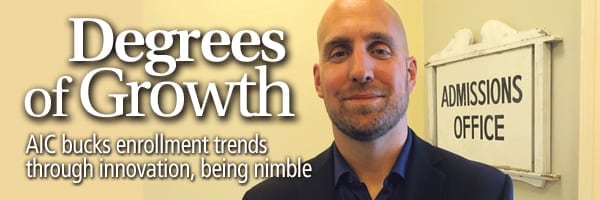

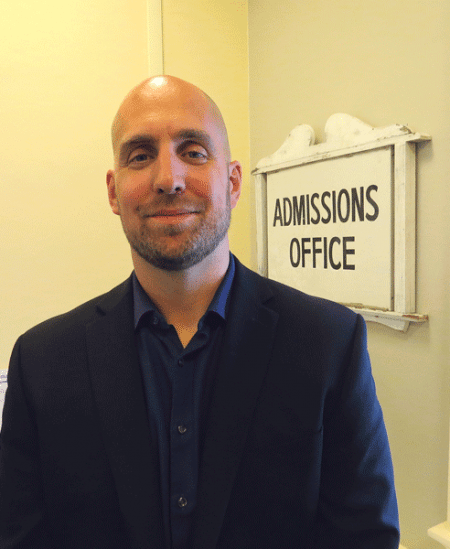
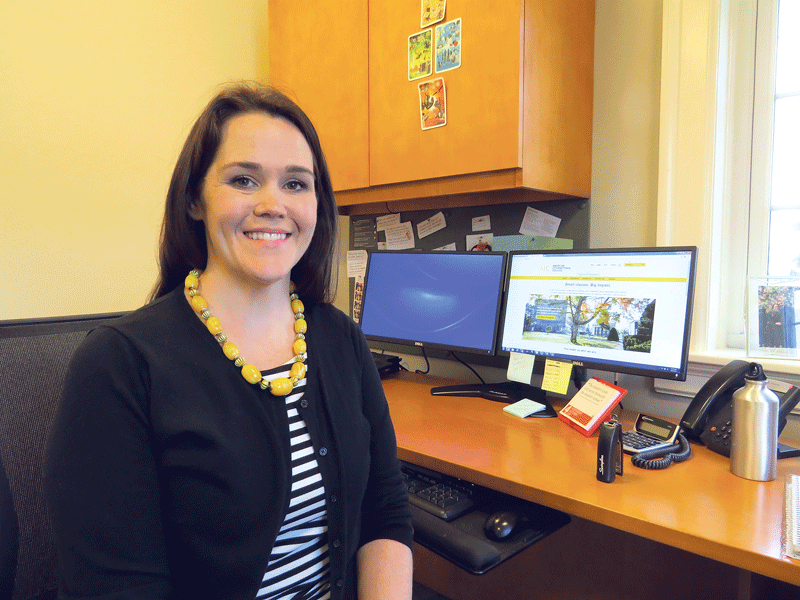


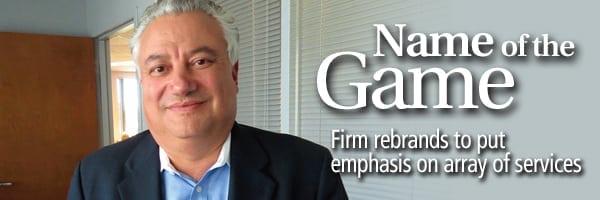


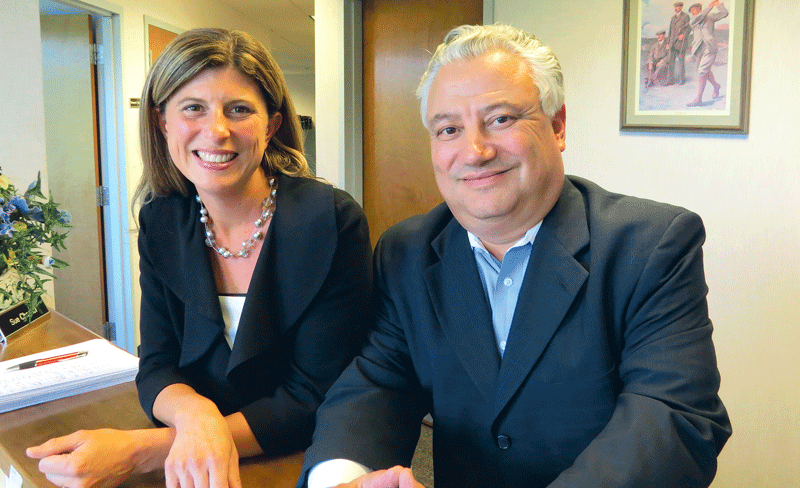


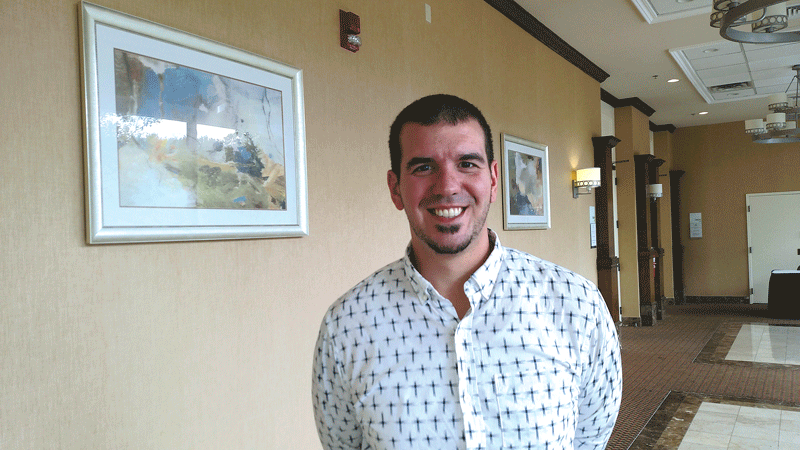


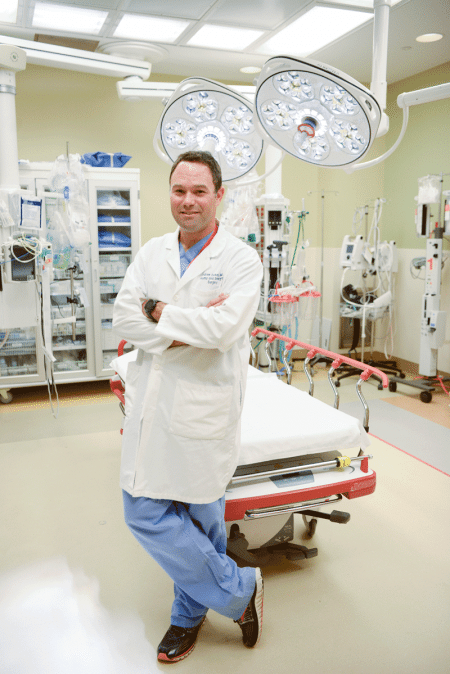

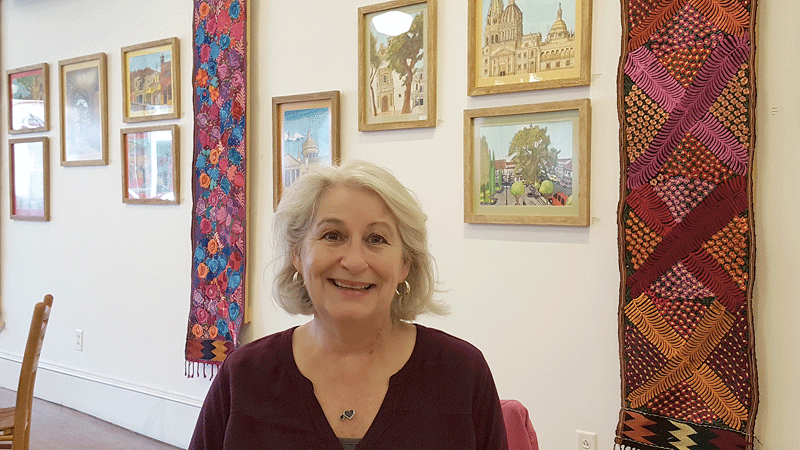

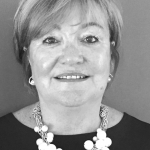
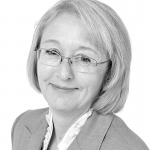
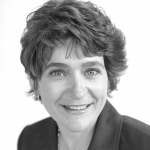
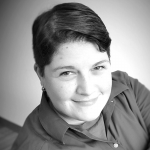
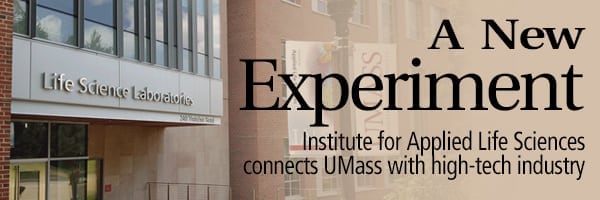
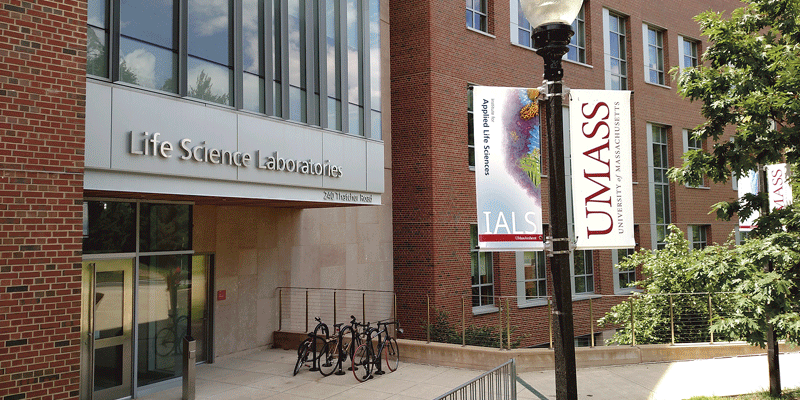 Peter Reinhart, director of the Institute for
Peter Reinhart, director of the Institute for 
